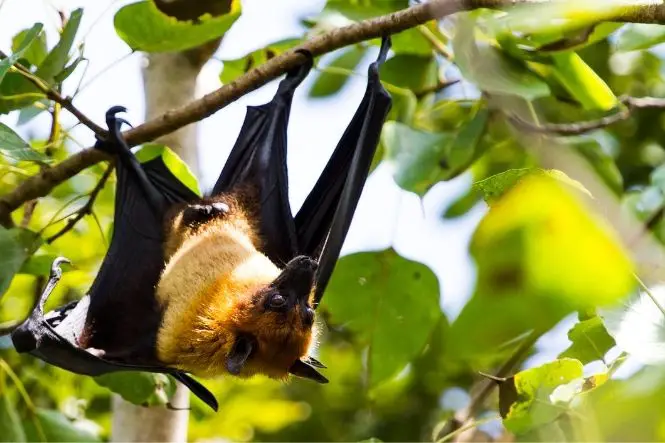Whether it’s because of Halloween or Dracula to many people, bats have obtained an unjust reputation as creatures which attack people, get tangled in their hair and are virulent carriers of rabies, all of which are simply not true. The first two statements are a myth and, as for the latter, they carry no more of an additional threat of rabies than any other average mammal. In fact, bats are very useful creatures to attract into your garden by acting as natural pest control eating many species of flying insects.
We love this section from Villains Rum about the myths and legends of Bats!
So, if we want to keep insects at bay organically and find the allure of bats to the garden tempting, how can we attract them?
Bat Boxes
In the same manner as all mammals, bats have a few basic needs – shelter from predators and the elements, warmth and water. You can buy bat boxes online or from a specialist stockist or you can build your own. If you’re doing a search on the internet, these are sometimes called ‘bat houses’. If you decide to construct your own bat box, it should be at least 2 feet tall and contain chambers of at least 20 x 14 inches in size. The bigger it is and the more chambers it has will increase the number of bats which are attracted to it. There should be an opening at the bottom to let the bats fly in and out with enough space for them to land. The interior of the wood you use to construct the box should be rough so that the bats can gain a good foothold. Varnished, dark wood will also help to retain the warmth.
Location of Your Bat Box
This is very important if you want to offer bats a welcoming ‘home’. Bats need water so if you have a pond, that’s ideal. If you don’t however, any bat box should be within half a mile or so of a lake, stream or other regular water supply or bats will simply not take up residence in it. Although bats avoid light, warmth is vital to them and young colonies of bats require a temperature of over 80F during the day. The box should be placed on the side of a house or barn or mounted on poles and should be placed around 15 feet or more off the ground facing in a southerly direction to maximise the amount of sun it will receive daily. Wherever you choose to locate your box, you need to ensure that its construction and location can withstand the worst that the weather can throw at it. However, trees are not suitable locations for bat boxes as they can often also be home to other predators like owls or hawks.
Food
Unlike so many other species of wildlife where you are encouraged to help them in their feeding in some way, bats do not require assistance here as they live predominantly off insects which can be found in every garden. As long as there are any moths, mosquitoes, flying beetles, gnats etc., in fact, any flying insect that ventures out at night, bats will thrive and they can often eat between a quarter to a half of their entire body weight in insects each night. Their droppings make for excellent fertiliser too, benefiting herbs, flowers and vegetables which are an additional reason to want to attract bats.
Bats are highly significant ecologically, so you should look to debunk the myths surrounding bats and offer them a warm welcome into your garden. They might not spot your bat box for quite a while but, once they do move in, they’re extremely loyal to their roost and will return year upon year.

